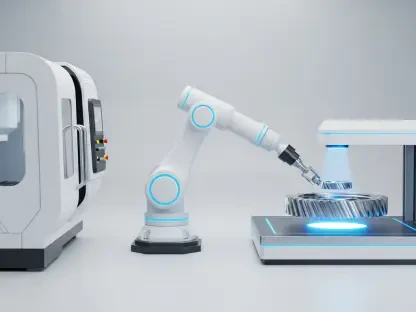In the bustling landscape of global semiconductor manufacturing, Japan aims to resurrect its former glory. Once a titan in chip production, Japan commanded over half the global market in the 1980s due to breakthroughs in electron beam lithography and strong state support. The tides turned in the 1990s, pushing Japan to a peripheral role. Now, with fresh strategies, substantial government subsidies, and significant public-private collaborations, Japan is setting the stage for a grand return.
As we look back, Japan’s dominance in the semiconductor industry during the 1980s was bolstered by substantial technological advancements. Innovations such as electron beam lithography, combined with robust state policies, allowed Japan to command more than 50% of the global market share. During this era, Japanese firms were at the pinnacle of semiconductor technology, influencing various facets of the electronics industry. However, the 1990s ushered in significant challenges. Under the Reagan administration, the United States imposed aggressive economic policies, including tariffs and the 1986 U.S.-Japan Semiconductor Agreement. These measures compelled Japan to lower semiconductor prices and increase the presence of foreign chips in its domestic market, eroding the competitive edge that Japanese firms once enjoyed.
Further compounding Japan’s challenges was the industry’s transition towards specialization in the 1990s. Until then, companies typically managed both chip design and manufacturing, a domain where Japan excelled. However, firms began to either focus exclusively on design or manufacturing, with the Taiwanese Semiconductor Manufacturing Company (TSMC) exemplifying this trend. TSMC’s exclusive focus on manufacturing and significant investment in this area allowed it to surpass Japanese firms, effectively diminishing Japan’s market share. As the U.S., Taiwan, and South Korea advanced, Japan witnessed a drastic decline in its semiconductor dominance, losing substantial ground to these emerging giants.
Japan’s Renewed Strategy: Subsidies and Collaboration
To reclaim its semiconductor stronghold, Japan has rolled out a state-led initiative underpinned by substantial financial investment and international collaboration. Recognizing the critical role of advanced microchip production, the Japanese government has unveiled generous subsidies to invigorate the sector. With these measures, Japan aims to modernize its semiconductor industry and regain its competitive edge. Central to Japan’s renewed strategy is Rapidus Corporation, founded in 2022 through a partnership between the Japanese government and eight leading domestic enterprises. Rapidus has set an ambitious objective to develop and produce 2-nanometer chips by 2027, placing Japan in direct competition with global leaders such as TSMC and Samsung. By targeting this technological milestone, Japan seeks to make significant strides in meeting the demands of the cutting-edge semiconductor market.
Moreover, Japan is not pursuing this revival in isolation. Strategic international partnerships form a key component of its approach. For instance, Rapidus has teamed up with IBM for chip design, marking a significant step toward advancing Japan’s capabilities in the semiconductor space. Additionally, Japan has successfully attracted foreign investment, exemplified by TSMC’s decision to set up fabrication plants in Kumamoto Prefecture on Kyushu Island. These collaborations underscore Japan’s willingness to blend domestic expertise with foreign prowess, creating a more robust and competitive semiconductor industry. By leveraging these relationships, Japan aims to fortify its semiconductor sector, ensuring it can compete on the global stage.
Strategic Focus and Challenges: Ambition and Realism
A critical element in Japan’s strategy is its investment in technological expertise, particularly in chip packaging, which is essential for enhancing semiconductor performance. This focus on specialized areas reflects Japan’s intent to maintain a competitive edge while pushing forward with ambitious goals. Rapidus’s aim to produce 2-nanometer chips by 2027 is indeed lofty. However, the competitive landscape, where companies like TSMC and Samsung are expected to advance towards 1.5-nanometer chips, underscores the need for Japan to balance ambition with realism. This challenge highlights the importance of strategic planning and continuous innovation to stay relevant in an increasingly competitive market.
Concurrently, Japan is leveraging its position in legacy markets—older semiconductor technologies that remain in high demand across various electronic products. This dual-focus strategy, which includes both cutting-edge developments and established technologies, ensures diverse revenue streams for Japan’s semiconductor sector. While working on advanced microchip production, Japan continues to capitalize on its strengths in legacy semiconductor technologies, providing a safety net while pursuing innovative advancements. This multifaceted approach helps stabilize the industry economically and creates a foundation that supports both immediate and long-term objectives.
Geopolitical Dynamics: Navigating a Complex Landscape
Japan’s semiconductor strategy is heavily influenced by geopolitical currents, notably the US-China trade war. Restrictions on semiconductor exports to China have impacted Japanese firms, prompting a reevaluation of market strategies. To mitigate these disruptions, Japan is keen on tapping into new markets and bolstering domestic demand. This geopolitical chess game necessitates a delicate balancing act, as Japan navigates international tensions while striving to maintain robust economic growth. The national drive to revive the semiconductor industry goes beyond economic rejuvenation; it touches on national security. Semiconductors are foundational to modern technologies like AI and electric vehicles (EVs), making a secure supply chain a top priority for Japan.
In this evolving landscape, Japan continues to leverage its strengths in niche areas such as semiconductor materials and precision equipment. Japanese companies dominate the global market for essential components like photoresist materials and specialized coatings, which are critical for semiconductor manufacturing. By capitalizing on these existing advantages, Japan aims to secure a competitive edge and carve out a renewed role in the global semiconductor landscape. This strategy underscores Japan’s commitment to not only reclaim its past dominance but also to adapt to and thrive within the modern semiconductor industry’s dynamic environment.
National Security and Economic Growth: An Integrated Approach
In the fast-paced world of global semiconductor manufacturing, Japan is striving to reclaim its once-dominant position. Back in the 1980s, Japan held over half the global market share, thanks to advancements in electron beam lithography and strong governmental support. This golden era saw Japanese companies at the forefront of semiconductor technology, significantly shaping the electronics industry. However, the tide shifted in the 1990s, relegating Japan to a peripheral role.
The Reagan administration in the U.S. implemented aggressive economic policies, such as tariffs and the 1986 U.S.-Japan Semiconductor Agreement. These measures forced Japan to lower semiconductor prices and increase foreign chip presence in its domestic market, eroding its competitive edge.
Compounding the issues was the industry’s move toward specialization. Japanese firms traditionally managed both chip design and manufacturing but struggled when the market shifted focus. The Taiwanese Semiconductor Manufacturing Company (TSMC) exemplified the new trend by concentrating solely on manufacturing and making significant investments in this area, surpassing Japanese firms. As countries like the U.S., Taiwan, and South Korea advanced, Japan’s share dwindled. Now, armed with new strategies, substantial government subsidies, and strong public-private partnerships, Japan is poised for a comeback.









